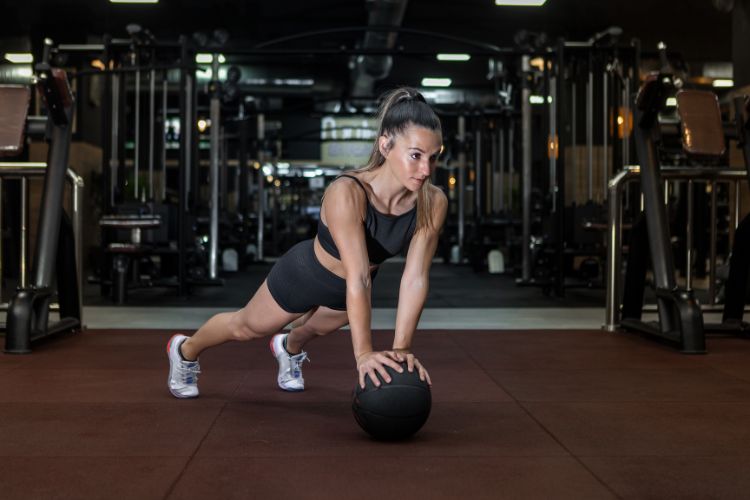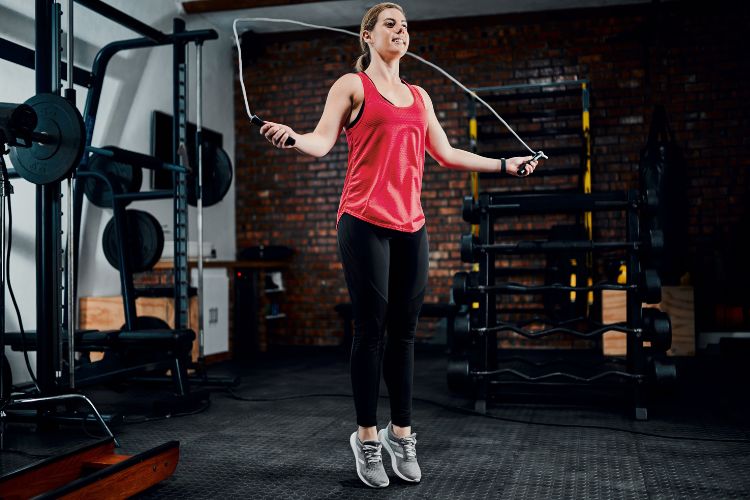Sign up for workout ideas, training advice, reviews of the latest gear and more.






Jumping rope may remind us of childhood playground games, but it’s one of the most effective, efficient workouts you can add to your fitness routine. With just a rope, you can build strength, increase your cardiovascular fitness, and burn calories faster than many other forms of cardio. In this post, we’ll explore everything you need to know about jumping rope workouts, from their benefits and proper techniques to different routines that suit all fitness levels. Whether you’re a beginner or a fitness enthusiast, a jump rope workout can help you reach your fitness goals.
Jumping rope is a high-intensity cardio workout that gets your heart rate up quickly. Regular jump rope exercises can strengthen your heart, improve circulation, and increase lung capacity, which is vital for overall cardiovascular health. Studies show that jumping rope for even 10 minutes a day can have the same cardiovascular benefits as 30 minutes of jogging.
One of the key benefits of jumping rope is its ability to burn a significant number of calories in a short amount of time. According to estimates, jumping rope can burn up to 10 calories per minute, making it one of the most efficient calorie-burning workouts. This makes it an excellent option for those looking to lose weight or maintain a healthy weight.
Jumping rope requires concentration and coordination. As you jump, you need to synchronize your hands, feet, and breathing, which improves motor skills and balance over time. For athletes or those involved in sports, improved coordination from jump rope exercises can directly benefit their performance.
Although jumping rope may seem like primarily a cardio workout, it also engages muscles throughout your body. Each jump works your calves, quads, hamstrings, glutes, core, and even your shoulders. Regular jump rope workouts can help strengthen these muscles, enhancing endurance and power.
Jumping is a weight-bearing exercise, which makes it beneficial for increasing bone density. High-impact exercises like jumping rope stimulate bone growth, which can help protect against osteoporosis. As a low-equipment workout that you can do anywhere, jumping rope is a convenient way to support bone health.
There are various types of jump ropes available, each suited for different purposes. Here’s a quick guide to help you pick the best one for your workout:
The ideal jump rope should reach from your feet up to your armpits when doubled. Adjustable ropes are excellent for customizing the length to suit your height.
Good form is crucial for maximizing the benefits of jumping rope and minimizing the risk of injury. Here are the basics to get started:
Avoiding common mistakes can make your workout smoother and prevent unnecessary strain. Here are some things to watch out for:
The basic jump is the foundational move of any jump rope workout. Here’s how to perform it:
Repetitions: Start with 1 minute, rest for 30 seconds, and repeat for 3 rounds.
Double unders are a more advanced technique where the rope passes under your feet twice per jump. This move requires a faster rope speed and greater control.
Repetitions: Aim for 10–20 double unders in each round, resting for 1 minute between rounds.
The high knees jump incorporates an additional challenge for your core and legs, making it an effective cardio and core workout.
Repetitions: Perform high knees jumps for 30 seconds, rest for 15 seconds, and repeat for 4 rounds.
Criss-cross jumps add a coordination challenge and work your chest and shoulders.
Repetitions: Perform criss-cross jumps for 20 seconds, rest for 10 seconds, and repeat for 3 rounds.
For those just starting, it’s best to keep things simple and focus on mastering basic techniques. Here’s a beginner routine:
Repeat the circuit twice for a quick, effective beginner workout.
This routine introduces more advanced moves like double unders and criss-crosses.
Repeat this circuit three times.
For experienced jumpers, this advanced workout focuses on endurance and intensity.
Repeat the circuit three to four times, depending on your fitness level.
Consistency is key to seeing results with jumping rope. Aim to jump rope at least three to four times a week for the best results. Even if you only have 10-15 minutes, a quick JR session can still provide substantial cardiovascular and muscular benefits.
To create a well-rounded workout program, consider combining JR with strength training exercises. You can alternate between jump rope intervals and bodyweight exercises like push-ups, squats, and planks. This adds variety to your workout and builds both cardiovascular fitness and muscle strength.
Use a fitness tracker or an app to monitor your jumps, calories burned, and time spent on each routine. Tracking your progress can be motivating and help you set new personal records.
Because jumping rope is a high-impact activity, quality footwear is essential for shock absorption and support. Look for athletic shoes with good arch support and cushioned soles to protect your joints.
A jumping rope workout is a simple yet highly effective way to improve cardiovascular health, build strength, and burn calories. By incorporating different techniques and routines, you can keep your workouts engaging and challenging at any fitness level. Whether you’re a beginner aiming to get fit or an experienced athlete looking to boost endurance, JR offers a full-body workout that’s easy to modify and adjust.
So, grab a jump rope, find a bit of open space, and start reaping the benefits of this classic, powerful workout!
Stay up to date on the latest women’s health, fitness and lifestyle trends and tips.